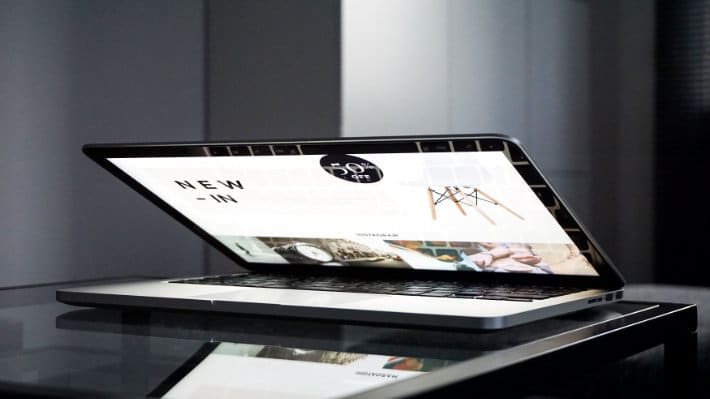
As a web designer, your job is to design websites that are beautiful to behold, functional to use, and that fit the needs and requirements of your clients, right?
Well yes, but that’s only part of the story.
Web design is a service industry, so delivering the goods is merely one element of the package you should be offering. It’s also about how you deliver those goods.
Imagine going to a beautiful restaurant and enjoying a delicious meal, or spending the night in a luxury hotel where you sleep blissfully between soft Egyptian cotton sheets. Regardless of how wonderful these experiences are, you’d think twice about repeating them if the waiter or concierge was rude, offensive, or simply made you feel uncomfortable, wouldn’t you?

It’s no different with our industry. If you want to build and retain a loyal client base, you need to work hard to make your clients feel comfortable working with you and make them happy with the service you provide.
Here are our top tips for keeping your clients happy.
Ask the right questions
Some clients won’t be used to working with web designers, so it’s your responsibility to ask the right questions.
Don’t simply ask them how they want their site to look. Instead find out who their target audience is and what they want their website to achieve—this will give you a much better basis to work from.
If they have a current website, find out what they do and don’t like about it. And if they’ve worked with designers before, see if you can find out why they don’t want to work with them again.
Asking the right questions will help you to identify exactly what problems your clients face with their site and enable you to design with that in mind.

Be a great listener
Asking the right questions is only half the process. You also need to know how to be a great listener.
Listening is a skill. Don’t just jot down answers to the questions you’ve asked. Demonstrate that you’re listening by repeating important points back to them to clarify, and don’t forget to read between the lines—sometimes what they omit to say can be just as important. They may not want to say what they didn’t like about their previous designer, but the clues will be there somewhere. It’s your job to pick up on them and ensure you don’t make the same mistakes.
What’s more, it’s not especially professional if you have to go back to them a week or so later to clarify some points because you zoned out as they were talking.
Explain the process
When you’re clear on the job you have to do, you need to explain the process to your clients. There’s a fine balance to this, especially if they aren’t particularly tech-savvy.
As a professional, you know what you’re talking about. But they possibly don’t, so you don’t want to blind them with lots of technical explanations that will leave them scratching their heads in bewilderment.
Explain what you do in simple, laymen’s terms, without being overly patronizing or too simplistic, and note their reaction to check they fully understand what you mean.

Maintain communication
Good communication is paramount in a designer–client relationship. Keep them updated with progress as you work on their project and be sure to warn them if you hit upon any unexpected hitches.
It’s important that they know the lines of communication are always open so they can approach you for questions if they need to. Of course, you need to maintain a professional stance on this—no answering phone calls at 4 a.m.—but be prompt when answering emails and always make time for meetings or calls.
Good communication is an important factor in building trust, and trust is a crucial element to building long-term client relationships.
Be honest
Honesty is another integral element of building trust. If a client asks you something and you don’t know the answer, don’t quickly fudge a reply and move on. Say you’ll do some research, then get back to them when you know all the facts and can provide a proper answer.
Likewise, don’t agree to a tight timeline if you’re not certain you can deliver it – letting people down is not going to make them happy. If you can’t do the work, be honest so they can find somebody who can (if you can suggest somebody from your contacts, go ahead—they’ll be doubly grateful to you). And if you can, make sure you deliver on time, and you will have one grateful, and loyal, new client.
On the subject of honesty, if you’re recommending a certain piece of software or new method to use on their site, don’t only focus on the positives. Everything has its pros and cons, so make sure you explain both so the client can make an informed decision and you don’t set them up with unrealistic expectations that you probably can’t fulfill.
Learn when, and how, to say no
If your client approaches you with a bad idea—to use cheesy stock photos or a fancy new design technique that’s completely unsuited to their target audience—you need to say no.
But don’t dismiss their idea with a wave of the hand. Explain to them, in simple, professional terms, why that won’t work on their site. They may be disappointed, but they’ll thank you in the long run.
“Sometimes, the most honest thing you can do is to say no. ”
Add a personal touch
Designer–client relationships can be a long-term thing, so your relationship can benefit if you take a little time to get to know them on a more personal level. Of course, this does depend on the client—some people like to keep things strictly business and, if that’s the case, you should respect it.
But taking the time to see if you have any shared interests or common hobbies can give you something to chat about, and bring a sense of ease and familiarity to your relationship.

Promote their brand
Clients love it if you’re as enthusiastic about their brand as they are. So promote their brand and website when your project is complete. Share their good work (by default, you’ll be promoting your good design work, too) on social media and include it in your design portfolio.
This will help to boost their profile, and will also maintain your good relationship.
Deliver the goods
Our final tip to keeping your clients happy is simple: deliver what you’ve promised, to the agreed timescales. Make sure your design is beautiful to look at, easy to use, and that it meets your clients’ requirements and appeals to their target audience.
If you complete the task in hand while offering an excellent service and making your clients feel comfortable, you’ll be well on the way to keeping your clients happy and building trust for a long-term working relationship. Our jobs are more than simply designing and coding; we also deal with other people, and our ability to do this on a respectful, empathetic level is equally as important as our technical skills.
What do you do in your web design business to ensure your clients are happy? Do you have any tips and tricks to share with us? Tell us below.






Comments ( 291 )
Davidunlor
May 28, 2025
https://biotpharm.shop/# buy antibiotics online
Josephner
May 28, 2025
Ero Pharm Fast: get ed meds today - Ero Pharm Fast
CurtisAdurl
May 28, 2025
Over the counter antibiotics for infection: buy antibiotics online uk - buy antibiotics from canada
Josephner
May 28, 2025
Buy medicine online Australia: Pharm Au 24 - Licensed online pharmacy AU
Rodneysog
May 28, 2025
online pharmacy australia [url=https://pharmau24.com/#]Buy medicine online Australia[/url] pharmacy online australia
Josephner
May 28, 2025
online pharmacy australia: Discount pharmacy Australia - Buy medicine online Australia
CurtisAdurl
May 28, 2025
buy ed meds: Ero Pharm Fast - buying erectile dysfunction pills online
Josephner
May 28, 2025
online pharmacy australia: online pharmacy australia - Discount pharmacy Australia
CurtisAdurl
May 27, 2025
Medications online Australia: Online drugstore Australia - pharmacy online australia
Rodneysog
May 27, 2025
Ero Pharm Fast [url=https://eropharmfast.shop/#]Ero Pharm Fast[/url] Ero Pharm Fast
Davidunlor
May 27, 2025
http://biotpharm.com/# Over the counter antibiotics pills
Josephner
May 27, 2025
buy antibiotics: buy antibiotics online - buy antibiotics over the counter
Josephner
May 27, 2025
Licensed online pharmacy AU: Licensed online pharmacy AU - Buy medicine online Australia
Rodneysog
May 27, 2025
Ero Pharm Fast [url=http://eropharmfast.com/#]cheapest online ed meds[/url] erection pills online
Davidunlor
May 27, 2025
http://pharmau24.com/# pharmacy online australia
CurtisAdurl
May 27, 2025
over the counter antibiotics: buy antibiotics online uk - Over the counter antibiotics pills
Josephner
May 27, 2025
Ero Pharm Fast: Ero Pharm Fast - Ero Pharm Fast
Charlesmub
May 27, 2025
best online doctor for antibiotics: Biot Pharm - buy antibiotics for uti
CurtisAdurl
May 27, 2025
PharmAu24: Licensed online pharmacy AU - Online medication store Australia
Rodneysog
May 27, 2025
ed medication online [url=http://eropharmfast.com/#]Ero Pharm Fast[/url] low cost ed medication
JosephTes
May 24, 2025
cost of cialis for daily use [url=https://tadalaccess.com/#]TadalAccess[/url] tadalafil 40 mg india
FrankieLar
May 23, 2025
https://tadalaccess.com/# do you need a prescription for cialis
JosephTes
May 23, 2025
cialis 5mg cost per pill [url=https://tadalaccess.com/#]tadalafil daily use[/url] buy cialis without prescription
Lorenhag
May 23, 2025
what are the side effects of cialis: cialis manufacturer coupon - cialis over the counter usa
FrankieLar
May 23, 2025
https://tadalaccess.com/# cialis overnight deleivery
JosephTes
May 23, 2025
cialis generic overnite [url=https://tadalaccess.com/#]п»їwhat can i take to enhance cialis[/url] cialis 2.5 mg
Lorenhag
May 23, 2025
cialis amazon: generic tadalafil prices - best time to take cialis 20mg
Lorenhag
May 23, 2025
does tadalafil work: TadalAccess - buying cialis online canadian order
JosephTes
May 23, 2025
canadian pharmacy tadalafil 20mg [url=https://tadalaccess.com/#]TadalAccess[/url] where can i buy cialis on line
FrankieLar
May 23, 2025
https://tadalaccess.com/# cialis canadian pharmacy ezzz
JosephTes
May 23, 2025
whats cialis [url=https://tadalaccess.com/#]us pharmacy cialis[/url] cialis online cheap
JosephTes
May 22, 2025
cialis coupon online [url=https://tadalaccess.com/#]cialis 20mg side effects[/url] canadian cialis
FrankieLar
May 22, 2025
https://tadalaccess.com/# cialis 10mg ireland
JosephTes
May 22, 2025
cialis with out a prescription [url=https://tadalaccess.com/#]best time to take cialis[/url] cialis what is it
Lorenhag
May 22, 2025
how to get cialis prescription online: cheap cialis for sale - online cialis
FrankieLar
May 22, 2025
https://tadalaccess.com/# when does tadalafil go generic
JosephTes
May 22, 2025
cheapest cialis 20 mg [url=https://tadalaccess.com/#]what is cialis good for[/url] buying cialis in canada
JosephTes
May 22, 2025
cialis side effects with alcohol [url=https://tadalaccess.com/#]TadalAccess[/url] tadalafil citrate research chemical
Scottdroca
May 22, 2025
what is the difference between cialis and tadalafil: buying generic cialis - cialis timing
Lorenhag
May 22, 2025
cialis ingredients: TadalAccess - best time to take cialis 5mg
FrankieLar
May 21, 2025
https://tadalaccess.com/# side effects of cialis
Scottdroca
May 21, 2025
cialis otc switch: cialis coupon free trial - price of cialis
Lorenhag
May 21, 2025
cialis milligrams: TadalAccess - maximum dose of tadalafil
JosephTes
May 21, 2025
cialis professional 20 lowest price [url=https://tadalaccess.com/#]TadalAccess[/url] how much does cialis cost at walgreens
FrankieLar
May 21, 2025
https://tadalaccess.com/# dapoxetine and tadalafil
Lorenhag
May 21, 2025
cialis 10mg reviews: cialis cheap - order cialis online
Scottdroca
May 21, 2025
do you need a prescription for cialis: cialis 20 mg price walmart - cialis canada free sample
FrankieLar
May 21, 2025
https://tadalaccess.com/# buy cialis with dapoxetine in canada
Lorenhag
May 21, 2025
how long does it take for cialis to start working: cialis and adderall - cialis medicine
JosephTes
May 20, 2025
whats the max safe dose of tadalafil xtenda for a healthy man [url=https://tadalaccess.com/#]Tadal Access[/url] buying cialis online canadian order
FrankieLar
May 20, 2025
https://tadalaccess.com/# where to buy cialis
Lorenhag
May 20, 2025
cheap cialis pills uk: Tadal Access - paypal cialis payment
JosephTes
May 20, 2025
cialis for bph insurance coverage [url=https://tadalaccess.com/#]Tadal Access[/url] cialis manufacturer
Scottdroca
May 20, 2025
what happens if a woman takes cialis: Tadal Access - cialis patent expiration date
FrankieLar
May 20, 2025
https://tadalaccess.com/# tadalafil generic usa
Lorenhag
May 20, 2025
canadian pharmacy generic cialis: TadalAccess - cialis online aust
JosephTes
May 20, 2025
tadalafil 10mg side effects [url=https://tadalaccess.com/#]TadalAccess[/url] buy cialis without doctor prescription
FrankieLar
May 20, 2025
https://tadalaccess.com/# evolution peptides tadalafil
Scottdroca
May 20, 2025
cialis free trial 2018: cialis review - cialis for sale toronto
Lorenhag
May 20, 2025
cialis drug interactions: cialis strength - tadalafil review forum
JosephTes
May 20, 2025
tadalafil tablets erectafil 20 [url=https://tadalaccess.com/#]TadalAccess[/url] cialis without a doctor prescription canada
Lorenhag
May 20, 2025
super cialis: TadalAccess - generic cialis online pharmacy
Scottdroca
May 20, 2025
cialis 20 milligram: Tadal Access - cialis com free sample
JosephTes
May 19, 2025
cialis pills for sale [url=https://tadalaccess.com/#]TadalAccess[/url] cialis no prescription overnight delivery
FrankieLar
May 19, 2025
https://tadalaccess.com/# can tadalafil cure erectile dysfunction
Lorenhag
May 19, 2025
natural cialis: cialis super active - cialis 100mg
Scottdroca
May 19, 2025
does cialis lowers blood pressure: Tadal Access - cialis for sale online in canada
JosephTes
May 19, 2025
side effects cialis [url=https://tadalaccess.com/#]Tadal Access[/url] tadalafil (megalis-macleods) reviews
FrankieLar
May 19, 2025
https://tadalaccess.com/# free samples of cialis
Lorenhag
May 19, 2025
cialis pharmacy: no presciption cialis - cialis generics
JosephTes
May 19, 2025
most recommended online pharmacies cialis [url=https://tadalaccess.com/#]tadalafil walgreens[/url] cialis 5mg daily
FrankieLar
May 19, 2025
https://tadalaccess.com/# vardenafil vs tadalafil
Lorenhag
May 19, 2025
cialis online pharmacy australia: achats produit tadalafil pour femme en ligne - how to get cialis for free
Scottdroca
May 19, 2025
pastilla cialis: TadalAccess - how to take cialis
Lorenhag
May 19, 2025
cialis w/o perscription: Tadal Access - vidalista 20 tadalafil tablets
FrankieLar
May 19, 2025
https://tadalaccess.com/# cialis doesnt work for me
Scottdroca
May 19, 2025
cialis super active real online store: Tadal Access - buying cialis in mexico
Lorenhag
May 18, 2025
side effects of cialis: Tadal Access - cialis trial
FrankieLar
May 18, 2025
https://tadalaccess.com/# cialis ingredients
JosephTes
May 18, 2025
how long does it take for cialis to start working [url=https://tadalaccess.com/#]sildenafil and tadalafil[/url] cialis com free sample
Lorenhag
May 18, 2025
best price for cialis: cialis 5mg price cvs - cialis buy without
FrankieLar
May 18, 2025
https://tadalaccess.com/# cialis soft tabs
Scottdroca
May 18, 2025
who makes cialis: cialis coupon rite aid - is cialis a controlled substance
FrankieLar
May 18, 2025
https://tadalaccess.com/# cialis dosis
JosephTes
May 18, 2025
tadalafil citrate [url=https://tadalaccess.com/#]Tadal Access[/url] generic cialis tadalafil 20mg reviews
Scottdroca
May 18, 2025
cialis otc 2016: cialis free trial voucher - tadalafil 20mg canada
Lorenhag
May 18, 2025
cialis 5mg daily: Tadal Access - cialis before and after pictures
FrankieLar
May 18, 2025
https://tadalaccess.com/# tadalafil walgreens
JosephTes
May 18, 2025
truth behind generic cialis [url=https://tadalaccess.com/#]TadalAccess[/url] cialis tadalafil 5mg once a day
Scottdroca
May 18, 2025
does cialis really work: TadalAccess - cialis from india online pharmacy
Lorenhag
May 18, 2025
cipla tadalafil review: TadalAccess - cialis free trial
JosephTes
May 17, 2025
cialis ingredients [url=https://tadalaccess.com/#]cialis for women[/url] difference between sildenafil tadalafil and vardenafil
Scottdroca
May 17, 2025
online cialis no prescription: TadalAccess - were can i buy cialis
FrankieLar
May 17, 2025
https://tadalaccess.com/# cialis website
JosephTes
May 17, 2025
cialis insurance coverage [url=https://tadalaccess.com/#]TadalAccess[/url] who makes cialis
Lorenhag
May 17, 2025
cialis indications: Tadal Access - cialis definition
Scottdroca
May 17, 2025
does cialis really work: tadalafil tamsulosin combination - canadian cialis
FrankieLar
May 17, 2025
https://tadalaccess.com/# cialis patent
JosephTes
May 17, 2025
over the counter cialis [url=https://tadalaccess.com/#]buy cialis online without prescription[/url] best price cialis supper active
FrankieLar
May 17, 2025
https://tadalaccess.com/# buy cialis online in austalia
Scottdroca
May 17, 2025
cialis pharmacy: cialis from india online pharmacy - how long does cialis last in your system
Lorenhag
May 17, 2025
tadacip tadalafil: TadalAccess - cialis pricing
JosephTes
May 17, 2025
tadalafil cost cvs [url=https://tadalaccess.com/#]Tadal Access[/url] cialis generic over the counter
Scottdroca
May 16, 2025
cialis payment with paypal: cialis price canada - cialis over the counter at walmart
Lorenhag
May 16, 2025
whats the max safe dose of tadalafil xtenda for a healthy man: where can i buy cialis online in australia - cheap cialis 5mg
JosephTes
May 16, 2025
walmart cialis price [url=https://tadalaccess.com/#]Tadal Access[/url] cialis male enhancement
FrankieLar
May 16, 2025
https://tadalaccess.com/# canadian cialis no prescription
FrankieLar
May 16, 2025
https://tadalaccess.com/# where to buy cialis online for cheap
JosephTes
May 16, 2025
cialis no perscrtion [url=https://tadalaccess.com/#]cheap cialis generic online[/url] buying cialis in mexico
Scottdroca
May 16, 2025
cialis max dose: cialis and grapefruit enhance - online cialis australia
Lorenhag
May 16, 2025
sildenafil vs tadalafil which is better: TadalAccess - cialis generico
FrankieLar
May 16, 2025
https://tadalaccess.com/# cialis for bph reviews
JosephTes
May 16, 2025
prices of cialis [url=https://tadalaccess.com/#]cialis w/o perscription[/url] whats the max safe dose of tadalafil xtenda for a healthy man
Lorenhag
May 16, 2025
cialis free trial phone number: TadalAccess - purchase brand cialis
FrankieLar
May 16, 2025
https://tadalaccess.com/# tadalafil 40 mg india
JosephTes
May 16, 2025
cialis 10mg ireland [url=https://tadalaccess.com/#]TadalAccess[/url] tadalafil oral jelly
Scottdroca
May 15, 2025
cialis what age: cialis overnight shipping - cialis dosage for ed
Lorenhag
May 15, 2025
price of cialis: canadian cialis no prescription - buy cialis without doctor prescription
FrankieLar
May 15, 2025
https://tadalaccess.com/# how much does cialis cost with insurance
JosephTes
May 15, 2025
cialis for prostate [url=https://tadalaccess.com/#]cialis when to take[/url] cialis store in philippines
Scottdroca
May 15, 2025
erectile dysfunction tadalafil: cialis street price - cialis 20 mg
Lorenhag
May 15, 2025
cialis com coupons: cialis pill canada - cialis 5 mg price
JosephTes
May 15, 2025
price of cialis at walmart [url=https://tadalaccess.com/#]TadalAccess[/url] cialis 20 mg price costco
Lorenhag
May 15, 2025
cialis for sale: Tadal Access - order cialis online cheap generic
Scottdroca
May 15, 2025
tadalafil (tadalis-ajanta) reviews: cialis premature ejaculation - cheap cialis free shipping
FrankieLar
May 15, 2025
https://tadalaccess.com/# cialis professional review
JosephTes
May 15, 2025
cialis substitute [url=https://tadalaccess.com/#]cialis milligrams[/url] stockists of cialis
Lorenhag
May 15, 2025
cialis free trial coupon: tadalafil eli lilly - cialis price cvs
Scottdroca
May 15, 2025
canada drug cialis: Tadal Access - cialis effect on blood pressure
FrankieLar
May 15, 2025
https://tadalaccess.com/# how to buy tadalafil online
Lorenhag
May 14, 2025
cialis 20mg tablets: Tadal Access - cialis package insert
JosephTes
May 14, 2025
buy cialis online free shipping [url=https://tadalaccess.com/#]Tadal Access[/url] cialis tablet
Scottdroca
May 14, 2025
cialis professional vs cialis super active: tadalafil generic usa - cialis pill canada
FrankieLar
May 14, 2025
https://tadalaccess.com/# cialis online without pres
Lorenhag
May 14, 2025
cialis daily side effects: TadalAccess - canadian pharmacy generic cialis
JosephTes
May 14, 2025
cialis 20 mg from united kingdom [url=https://tadalaccess.com/#]TadalAccess[/url] cialis super active
Scottdroca
May 14, 2025
mantra 10 tadalafil tablets: cialis manufacturer coupon - cialis buy without
FrankieLar
May 14, 2025
https://tadalaccess.com/# cheap cialis 20mg
Lorenhag
May 14, 2025
recreational cialis: Tadal Access - where to buy generic cialis ?
Scottdroca
May 14, 2025
vidalista 20 tadalafil tablets: tadalafil (tadalis-ajanta) - what are the side effect of cialis
FrankieLar
May 14, 2025
https://tadalaccess.com/# cialis pills online
JosephTes
May 14, 2025
walgreen cialis price [url=https://tadalaccess.com/#]buy cialis overnight shipping[/url] tadalafil versus cialis
Lorenhag
May 14, 2025
buy a kilo of tadalafil powder: cialis premature ejaculation - cialis daily
Scottdroca
May 14, 2025
cialis daily side effects: Tadal Access - wallmart cialis
FrankieLar
May 14, 2025
https://tadalaccess.com/# buy cialis online overnight delivery
JosephTes
May 14, 2025
how much does cialis cost at cvs [url=https://tadalaccess.com/#]how long for cialis to take effect[/url] para que sirve las tabletas cialis tadalafil de 5mg
Lorenhag
May 14, 2025
cialis online with no prescription: Tadal Access - cheap cialis pills
Scottdroca
May 14, 2025
where to get the best price on cialis: TadalAccess - buy cialis online from canada
Russellfeeve
May 13, 2025
cost clomid tablets: can i purchase clomid - order cheap clomid pills
RogerCouct
May 13, 2025
http://prednihealth.com/# PredniHealth
MatthewTom
May 13, 2025
amoxicillin without prescription [url=https://amohealthcare.store/#]buy amoxicillin online cheap[/url] amoxicillin 500mg price
Oscargef
May 13, 2025
amoxicillin 500mg price: Amo Health Care - buy cheap amoxicillin online
Russellfeeve
May 13, 2025
order amoxicillin online no prescription: Amo Health Care - amoxicillin 500mg capsules antibiotic
RogerCouct
May 13, 2025
http://prednihealth.com/# PredniHealth
MatthewTom
May 13, 2025
PredniHealth [url=https://prednihealth.shop/#]where can i buy prednisone[/url] PredniHealth
Oscargef
May 13, 2025
can i purchase generic clomid prices: where can i get generic clomid no prescription - cost of cheap clomid pills
Russellfeeve
May 13, 2025
online prednisone 5mg: PredniHealth - PredniHealth
RogerCouct
May 13, 2025
http://prednihealth.com/# prednisone 5mg price
MatthewTom
May 13, 2025
PredniHealth [url=https://prednihealth.shop/#]PredniHealth[/url] PredniHealth
Oscargef
May 13, 2025
Amo Health Care: how to get amoxicillin - Amo Health Care
RogerCouct
May 13, 2025
http://clomhealth.com/# can i purchase cheap clomid
MatthewTom
May 13, 2025
can you buy generic clomid pill [url=http://clomhealth.com/#]buying generic clomid without insurance[/url] order cheap clomid now
Oscargef
May 12, 2025
buy generic clomid without dr prescription: Clom Health - can i order generic clomid tablets
Russellfeeve
May 12, 2025
can you buy prednisone without a prescription: buy prednisone online no script - PredniHealth
JudsonZoown
May 12, 2025
amoxicillin for sale online: Amo Health Care - Amo Health Care
RogerCouct
May 12, 2025
https://prednihealth.com/# PredniHealth
MatthewTom
May 12, 2025
canadian online pharmacy prednisone [url=https://prednihealth.shop/#]generic prednisone otc[/url] prednisone prescription drug
Oscargef
May 12, 2025
can you buy generic clomid price: where can i buy clomid for sale - how to get generic clomid tablets
Russellfeeve
May 12, 2025
where to buy cheap clomid without dr prescription: where to get generic clomid pills - where to buy cheap clomid no prescription
JudsonZoown
May 12, 2025
Amo Health Care: Amo Health Care - amoxicillin azithromycin
RogerCouct
May 12, 2025
https://clomhealth.com/# can you get clomid
MatthewTom
May 12, 2025
order clomid without a prescription [url=https://clomhealth.com/#]can you get generic clomid prices[/url] cost generic clomid pill
Oscargef
May 12, 2025
amoxicillin 500 capsule: order amoxicillin online - order amoxicillin 500mg
Russellfeeve
May 12, 2025
where can i buy cheap clomid without rx: Clom Health - cost generic clomid pill
JudsonZoown
May 12, 2025
buy amoxicillin 250mg: amoxicillin price without insurance - Amo Health Care
RogerCouct
May 12, 2025
https://amohealthcare.store/# amoxicillin 500 mg capsule
Oscargef
May 12, 2025
online order prednisone 10mg: generic prednisone cost - where can i buy prednisone
MatthewTom
May 12, 2025
PredniHealth [url=https://prednihealth.shop/#]PredniHealth[/url] PredniHealth
Russellfeeve
May 12, 2025
Amo Health Care: price of amoxicillin without insurance - amoxicillin order online
JudsonZoown
May 12, 2025
20 mg prednisone tablet: where to buy prednisone uk - PredniHealth
RogerCouct
May 12, 2025
https://amohealthcare.store/# Amo Health Care
LorenzoBlize
May 12, 2025
legit Viagra online [url=https://maxviagramd.com/#]secure checkout Viagra[/url] same-day Viagra shipping
Albertoseino
May 12, 2025
doctor-reviewed advice: verified Modafinil vendors - modafinil pharmacy
Jeremyfax
May 11, 2025
best price Cialis tablets: online Cialis pharmacy - Cialis without prescription
RonaldFOEFS
May 11, 2025
https://modafinilmd.store/# Modafinil for sale
LorenzoBlize
May 11, 2025
discreet shipping ED pills [url=https://zipgenericmd.shop/#]discreet shipping ED pills[/url] buy generic Cialis online
Albertoseino
May 11, 2025
legal Modafinil purchase: Modafinil for sale - legal Modafinil purchase
LorenzoBlize
May 11, 2025
Modafinil for sale [url=https://modafinilmd.store/#]buy modafinil online[/url] doctor-reviewed advice
Jeremyfax
May 10, 2025
secure checkout Viagra: order Viagra discreetly - best price for Viagra
Albertoseino
May 10, 2025
secure checkout ED drugs: affordable ED medication - affordable ED medication
LorenzoBlize
May 10, 2025
safe online pharmacy [url=https://maxviagramd.shop/#]secure checkout Viagra[/url] safe online pharmacy
Albertoseino
May 10, 2025
cheap Viagra online: no doctor visit required - legit Viagra online
RonaldFOEFS
May 10, 2025
https://zipgenericmd.shop/# online Cialis pharmacy
Albertoseino
May 10, 2025
generic tadalafil: generic tadalafil - buy generic Cialis online
Jeremyfax
May 10, 2025
safe modafinil purchase: legal Modafinil purchase - safe modafinil purchase
Albertoseino
May 10, 2025
reliable online pharmacy Cialis: best price Cialis tablets - discreet shipping ED pills
Jeremyfax
May 10, 2025
verified Modafinil vendors: modafinil legality - doctor-reviewed advice
Jeremyfax
May 9, 2025
modafinil legality: modafinil 2025 - buy modafinil online
Albertoseino
May 9, 2025
modafinil 2025: buy modafinil online - legal Modafinil purchase
Jeremyfax
May 9, 2025
doctor-reviewed advice: modafinil legality - modafinil pharmacy
LorenzoBlize
May 9, 2025
order Viagra discreetly [url=https://maxviagramd.shop/#]order Viagra discreetly[/url] no doctor visit required
Albertoseino
May 9, 2025
safe modafinil purchase: buy modafinil online - purchase Modafinil without prescription
RonaldFOEFS
May 9, 2025
https://zipgenericmd.com/# Cialis without prescription
RobertKet
May 9, 2025
online Cialis pharmacy: generic tadalafil - affordable ED medication
LorenzoBlize
May 9, 2025
generic sildenafil 100mg [url=http://maxviagramd.com/#]trusted Viagra suppliers[/url] legit Viagra online
RonaldFOEFS
May 9, 2025
https://maxviagramd.shop/# order Viagra discreetly
RobertKet
May 9, 2025
buy generic Cialis online: affordable ED medication - Cialis without prescription
ElmerSip
May 8, 2025
vavada casino: вавада официальный сайт - вавада официальный сайт
ElmerSip
May 7, 2025
pin up az: pin-up casino giris - pin up azerbaycan
Richardmat
May 7, 2025
вавада [url=https://vavadavhod.tech/#]вавада казино[/url] vavada вход
ElmerSip
May 6, 2025
vavada: вавада официальный сайт - вавада зеркало
ElmerSip
May 5, 2025
вавада: вавада - вавада
ZackaryCaush
May 4, 2025
http://vavadavhod.tech/# вавада казино
ElmerSip
May 4, 2025
pin up azerbaycan: pin-up - pin-up
Richardmat
May 4, 2025
pin up [url=https://pinupaz.top/#]pin up az[/url] pin up azerbaycan
ZackaryCaush
May 3, 2025
https://pinupaz.top/# pin up azerbaycan
BrianCrugh
May 2, 2025
pin up az: pin up az - pin up
Richardmat
May 2, 2025
пин ап казино официальный сайт [url=http://pinuprus.pro/#]pin up вход[/url] пин ап казино
BrianCrugh
May 2, 2025
пинап казино: pin up вход - пин ап зеркало
ZackaryCaush
May 2, 2025
https://vavadavhod.tech/# vavada вход
BrianCrugh
May 1, 2025
pin-up: pin up azerbaycan - pin-up casino giris
Richardmat
May 1, 2025
вавада [url=https://vavadavhod.tech/#]вавада[/url] вавада официальный сайт
BrianCrugh
May 1, 2025
pin-up: pin up casino - pin-up
ElmerSip
April 30, 2025
pin up casino: pin-up casino giris - pin up
ZackaryCaush
April 30, 2025
http://pinuprus.pro/# пин ап казино
Richardmat
April 30, 2025
pinup az [url=http://pinupaz.top/#]pin-up[/url] pin-up
ZackaryCaush
April 30, 2025
http://vavadavhod.tech/# вавада зеркало
ElmerSip
April 30, 2025
вавада официальный сайт: vavada вход - вавада казино
Richardmat
April 30, 2025
пин ап казино официальный сайт [url=http://pinuprus.pro/#]пин ап казино[/url] пин ап зеркало
ZackaryCaush
April 30, 2025
https://pinupaz.top/# pinup az
ElmerSip
April 30, 2025
pin up az: pin-up casino giris - pin-up
Richardmat
April 30, 2025
pin-up [url=https://pinupaz.top/#]pin up azerbaycan[/url] pin up
ZackaryCaush
April 30, 2025
http://pinuprus.pro/# пинап казино
ElmerSip
April 30, 2025
pinup az: pin up casino - pin up azerbaycan
ZackaryCaush
April 30, 2025
https://pinupaz.top/# pin up azerbaycan
Richardmat
April 30, 2025
pin up azerbaycan [url=https://pinupaz.top/#]pin-up casino giris[/url] pin up
Stevendrype
April 30, 2025
indian pharmacy online: buy prescription drugs from india - indian pharmacy online
Dannysit
April 30, 2025
Rx Express Mexico: Rx Express Mexico - mexico pharmacies prescription drugs
Walterhap
April 29, 2025
https://expressrxcanada.com/# 77 canadian pharmacy
Michaeljouch
April 29, 2025
indian pharmacy [url=https://medicinefromindia.com/#]Medicine From India[/url] indian pharmacy online
Stevendrype
April 29, 2025
Rx Express Mexico: mexico pharmacies prescription drugs - RxExpressMexico
Walterhap
April 29, 2025
http://rxexpressmexico.com/# mexico pharmacies prescription drugs
Michaeljouch
April 29, 2025
mexico pharmacy order online [url=https://rxexpressmexico.shop/#]RxExpressMexico[/url] Rx Express Mexico
Dannysit
April 29, 2025
mexico pharmacies prescription drugs: mexican rx online - Rx Express Mexico
Stevendrype
April 29, 2025
Medicine From India: medicine courier from India to USA - indian pharmacy online shopping
MichaelFaulp
April 29, 2025
indian pharmacy: indian pharmacy - top 10 online pharmacy in india
Stevendrype
April 29, 2025
mexican online pharmacy: mexico pharmacy order online - mexican rx online
Dannysit
April 29, 2025
canadianpharmacyworld com: ExpressRxCanada - pet meds without vet prescription canada
Stevendrype
April 29, 2025
canadian pharmacy ed medications: Buy medicine from Canada - legit canadian online pharmacy
Dannysit
April 29, 2025
mexican online pharmacy: mexican drugstore online - mexico pharmacies prescription drugs
MichaelFaulp
April 29, 2025
india pharmacy mail order: medicine courier from India to USA - best online pharmacy india
Stevendrype
April 28, 2025
Medicine From India: indian pharmacy - indian pharmacy online shopping
Dannysit
April 28, 2025
MedicineFromIndia: Medicine From India - Medicine From India
Michaeljouch
April 28, 2025
mexico drug stores pharmacies [url=https://rxexpressmexico.shop/#]medication from mexico pharmacy[/url] Rx Express Mexico
Walterhap
April 28, 2025
http://expressrxcanada.com/# canadian pharmacies online
Stevendrype
April 28, 2025
MedicineFromIndia: indian pharmacy online shopping - indian pharmacy online
Dannysit
April 28, 2025
Medicine From India: india online pharmacy - MedicineFromIndia
Stevendrype
April 28, 2025
online pharmacy canada: Generic drugs from Canada - canada pharmacy
Dannysit
April 28, 2025
indian pharmacy online: Medicine From India - indian pharmacy
Walterhap
April 28, 2025
http://rxexpressmexico.com/# mexico drug stores pharmacies
Michaeljouch
April 28, 2025
indian pharmacy online shopping [url=https://medicinefromindia.com/#]indian pharmacy online shopping[/url] indian pharmacy online shopping
Stevendrype
April 28, 2025
best online pharmacies in mexico: mexico drug stores pharmacies - mexico pharmacies prescription drugs
Dannysit
April 28, 2025
indian pharmacy: Medicine From India - Medicine From India
PeterUnomb
April 28, 2025
vente de mГ©dicament en ligne [url=http://pharmafst.com/#]acheter mГ©dicament en ligne sans ordonnance[/url] vente de mГ©dicament en ligne pharmafst.shop
Robertmut
April 28, 2025
https://kamagraprix.com/# kamagra en ligne
BilliesniCt
April 28, 2025
pharmacie en ligne france livraison internationale: vente de mГ©dicament en ligne - pharmacie en ligne france livraison internationale pharmafst.com
Robertmut
April 27, 2025
https://kamagraprix.shop/# Acheter Kamagra site fiable
BernardVeida
April 27, 2025
acheter kamagra site fiable: kamagra livraison 24h - acheter kamagra site fiable
BernardVeida
April 27, 2025
acheter kamagra site fiable: kamagra 100mg prix - kamagra livraison 24h
Robertmut
April 27, 2025
https://pharmafst.shop/# pharmacie en ligne sans ordonnance
Robertmut
April 26, 2025
https://kamagraprix.com/# Kamagra pharmacie en ligne
Bradleyfup
April 26, 2025
Pharmacie Internationale en ligne: Pharmacie en ligne France - vente de mГ©dicament en ligne pharmafst.com
PeterUnomb
April 26, 2025
Pharmacie en ligne livraison Europe [url=http://pharmafst.com/#]vente de mГ©dicament en ligne[/url] pharmacies en ligne certifiГ©es pharmafst.shop
Robertmut
April 26, 2025
https://pharmafst.com/# pharmacie en ligne france livraison internationale
PeterUnomb
April 26, 2025
pharmacies en ligne certifiГ©es [url=https://pharmafst.shop/#]pharmacie en ligne[/url] pharmacie en ligne pharmafst.shop
BernardVeida
April 26, 2025
kamagra en ligne: kamagra oral jelly - Kamagra Commander maintenant
Bradleyfup
April 26, 2025
Kamagra Oral Jelly pas cher: kamagra en ligne - Acheter Kamagra site fiable
PeterUnomb
April 26, 2025
pharmacie en ligne sans ordonnance [url=http://pharmafst.com/#]pharmacie en ligne[/url] pharmacie en ligne livraison europe pharmafst.shop
BernardVeida
April 26, 2025
kamagra pas cher: achat kamagra - Achetez vos kamagra medicaments
Bradleyfup
April 25, 2025
pharmacie en ligne france pas cher: Meilleure pharmacie en ligne - pharmacie en ligne france livraison internationale pharmafst.com
BernardVeida
April 25, 2025
Kamagra Commander maintenant: Kamagra Commander maintenant - Kamagra Commander maintenant
BilliesniCt
April 25, 2025
pharmacie en ligne: Medicaments en ligne livres en 24h - pharmacies en ligne certifiГ©es pharmafst.com
PeterUnomb
April 25, 2025
cialis sans ordonnance [url=https://tadalmed.shop/#]Tadalafil achat en ligne[/url] Tadalafil achat en ligne tadalmed.com
Bradleyfup
April 25, 2025
pharmacie en ligne pas cher: pharmacie en ligne pas cher - trouver un mГ©dicament en pharmacie pharmafst.com
PeterUnomb
April 25, 2025
pharmacie en ligne france fiable [url=http://pharmafst.com/#]Meilleure pharmacie en ligne[/url] Pharmacie en ligne livraison Europe pharmafst.shop
Robertmut
April 25, 2025
https://pharmafst.shop/# pharmacie en ligne france fiable
Bradleyfup
April 25, 2025
Cialis sans ordonnance pas cher: Acheter Cialis - Achat Cialis en ligne fiable tadalmed.shop
Robertmut
April 25, 2025
http://pharmafst.com/# Pharmacie sans ordonnance
Bradleyfup
April 25, 2025
kamagra 100mg prix: Kamagra Oral Jelly pas cher - Kamagra Commander maintenant
DavidSaisp
April 23, 2025
Acheter Kamagra site fiable: Kamagra Commander maintenant - kamagra pas cher
Edwardtoupe
April 23, 2025
olympe casino avis: olympe casino en ligne - olympe casino cresus